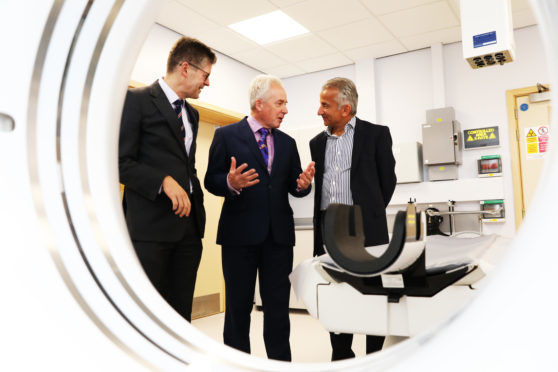A new state-of-the-art CT scanner which could help detect life-threatening diseases quicker has been unveiled at Ninewells hospital.
The device will be used on a shared basis between hospital staff and researchers from Dundee University.
Working in conjunction with other MRI scanners on site, the unit will be able to detect problems including heart disease and cancer much earlier.
It will also allow for clinical research trials to be conducted to even higher standards, meaning improvements to the ways in which cardiac issues and symptoms of cancer are treated and discovered.
The scanner is located at the hospital’s clinical research imaging facility on James Arnott Drive, one of a handful across the world dedicated to this type of scientific discovery.
During a tour on Tuesday, the machine was shown to patients and staff, including NHS Tayside chief executive Malcolm Wright.
Professor Douglas Steele, consultant psychiatrist and professor of neuro-imaging at the university, said: “In particular with this CT scanner, researchers and doctors here at the centre will be able to carry out work on cardiac issues, as well as detecting vascular issues like strokes and also cancers.
“This is a joint project between the university and the NHS.
“The scanner is state-of-the-art, it will be able to produce really good quality images and can also be used by people for whom MRI scanners are not an option – people with metal implants in their bodies and pacemakers.
“This will be one of the highest quality scanners in the country.”
Professor Graeme Houston, co-director of clinical research imaging facility, said: “Computerised tomography (CT) scanners use X-rays to create detailed images of the inside of the body.
“This new addition to our unit will mean thousands more scans will be taken every year – this will not only help patients locally but also provide crucial data for our clinical research into life-threatening diseases.
“Our current MRI scanner uses a 3 Telsa magnetic field that is twice as strong as most clinical scanners.
“This combined with our new CT scanner, means we will be able to help detect abnormalities within patients earlier and also mean we can provide safe clinical trials completed to the highest standards.”





